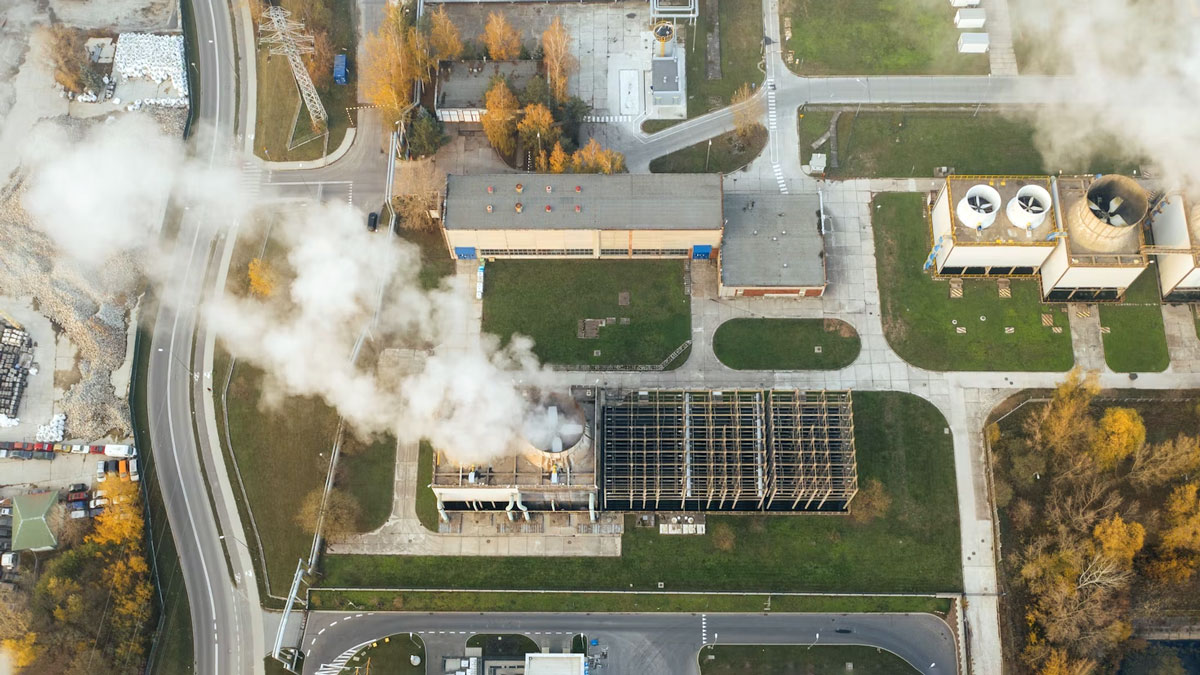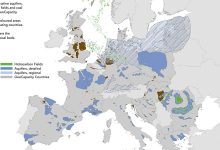Methane Emissions in Romania: Monitoring of Gas Installations
In 2022, the draft EU Regulation on methane emissions reduction (14615/22), which has reached Revision VII, has gone almost unnoticed, without taking into account a number of particularities of the Romanian gas industry (production, transmission, distribution), which may have a negative impact on gas consumers and not least on energy security. We believe that this issue requires immediate and active involvement in the campaign Responsible monitoring of gas installations to avoid any emissions, so that we don’t complain (once again), that “we couldn’t help it, that’s what Brussels wanted”.
Most people have heard of the water cycle in nature, where water evaporates into the air, returns to Earth, and then evaporates again. Many other substances, including methane, circulate this way. There are many sources that release methane (CH4) into the atmosphere. There are also ways by which methane is trapped or destroyed.
The methane cycle starts in the soil, where methane gas is created by microbes. Methane in the soil is consumed by methanotrophs, microorganisms that feed on methane. Methanogens produce more methane than methanotrophs consume. Methanotrophs live in drier soil layers above the deep, moist, oxygen-poor soils of marshes. Their ‘food’ passes by them on its way to the surface, releasing methane into the atmosphere. This methane joins methane from other sources, such as landfills, stock farming and fossil fuel exploitation.
Methane sources
Natural sources of methane include wetlands, gas hydrates, termites, oceans, freshwater bodies, and other sources such as vegetation fires. Estimated methane emissions are approx. 190 – 430 trillion metric tonnes.
Natural wetlands are responsible for about 80% of global methane emissions from natural sources. Wetlands such as marshes, peatlands and permafrost provide a favourable habitat for microbes that produce methane during the decomposition of organic materials. These microbes require oxygen-free environments and plenty of organic matter, both of which are present in wetlands. Wetlands contribute about 140-280 trillion metric tonnes to the global methane budget each year.
Global methane emissions from termites and their mounds are estimated at about 11% of global methane emissions from natural sources or about 2-20 trillion metric tonnes per year. Microbes in the termite gut produce methane as part of their normal digestion process, and the amount generated varies between species. Termite-related emissions are highly dependent on the termite population, which varies significantly in different regions.
It is estimated that oceans are responsible for about 8% of global methane emissions from natural sources or between 20-30 trillion metric tonnes per year. The source of methane in the oceans is not completely clear, but two identified sources include anaerobic (oxygen-free) digestion in marine zooplankton and fish, and from methane produced in sediments and drainage areas along coastal regions.
Global emissions from methane hydrates account for about 5% of global methane emissions from natural sources, 9-18 trillion metric tonnes per year. Methane hydrates are methane molecules that are frozen into ice crystals. The amount of methane stored in these hydrates globally is estimated to be very large, making the potential for release of large amounts of methane a real possibility should deposit stability failures occur.
Forest fires are another source of methane generation. Basically, the process of burning and preheating the wood material releases biogas – methane – into the atmosphere, which adds to the balance of methane emissions. This is estimated at 20 – 80 trillion metric tonnes per year.
Human sources that produce methane include fossil fuel production, livestock industry, rice cultivation, biomass burning and waste management. These activities release significant amounts of methane into the atmosphere. Methane emissions are estimated at approx. 293 – 318 trillion metric tonnes (hypothetically these resources could heat all buildings in Europe every year).
Methane is generated in landfills and open dumps as waste decomposes under anaerobic (oxygen-free) conditions. The amount of methane created depends on the amount and moisture content of the waste and the design and management practices at the site. Landfills in regions with dry conditions are not as productive as those in areas with high moisture content. In 2012, landfills contributed 102.8 trillion metric tonnes to the atmosphere.
Coal mines develop significant amounts of methane, which are extracted from the tunnels and dispersed into the atmosphere for worker safety. Coal mines contribute about 19-25 trillion metric tonnes of methane to the atmosphere.
Methane is the main component of natural gas. Methane is released during the production, processing, storage, transmission, and distribution of natural gas. Because natural gas is often found associated with oil, the gathering and burning of oil also contributes to total methane emissions. The combined extraction and use of fossil fuels contributes about 25 to 50 trillion metric tonnes of methane annually.
Domestic animals such as cattle, sheep, goats, or wild animals (buffalo, deer) and camels produce large amounts of methane as part of their normal digestive processes. In the first large stomach of these animals, microbial fermentation turns feed into products that can be digested and used by the animal. This process produces methane as a by-product, which is exhaled by the animal (the cow’s breath). Methane is also produced in smaller quantities by the digestive processes of other animals, including humans, but emissions from these sources are insignificant. Livestock contributions range from 85-95 trillion metric tonnes each year.
Wastewater is treated to remove soluble organic matter, suspended solids, pathogenic organisms, and chemical contaminants. These treatment processes can produce methane emissions if the organic ingredients in the wastewater are treated without oxygen and if the methane produced is released into the atmosphere. In addition, sludge produced from some treatment processes can be further biodegraded under anaerobic conditions, resulting in methane emissions. Wastewater treatment adds about 12.8 trillion metric tonnes of methane each year.
Methane is produced during rice cultivation in flooded areas by decomposing organic matter in the soil. Flooded soils are ideal environments for methane production due to high levels of organic substrates, poor oxygen conditions and moisture. The level of emissions depends on soil conditions and production practices, as well as climate. There are farming practices that could be useful in reducing methane emissions from rice cultivation. Without them, rice production adds between 7.4 trillion metric tonnes per year of methane emissions.
Contribution of the natural gas sector
Thus, of the total methane emissions in the world of 483 – 746 trillion metric tonnes per year, emissions of gaseous fuels (gas industry) account for 5 – 7%.
The EU aims to reduce methane emissions from the natural gas sector by 30%, a reduction of approx. 2% of total existing methane emissions in a year, which is below the error of these measurements worldwide.
Of course, it is necessary to reduce methane emissions, but through reasonable activities and actions, not ones that do not bring real changes to the environment, but which may affect the level of energy security and especially the living standards of Romanians.
Conclusion
Awareness of this situation must be raised at the level of the Romanian authorities, but especially at the level of MEPs, to prevent Romania, a country where natural gas is the largest form of primary energy used, from closing its gas wells and switching to gas imports after the adoption of the future European Methane Emissions Regulation.







